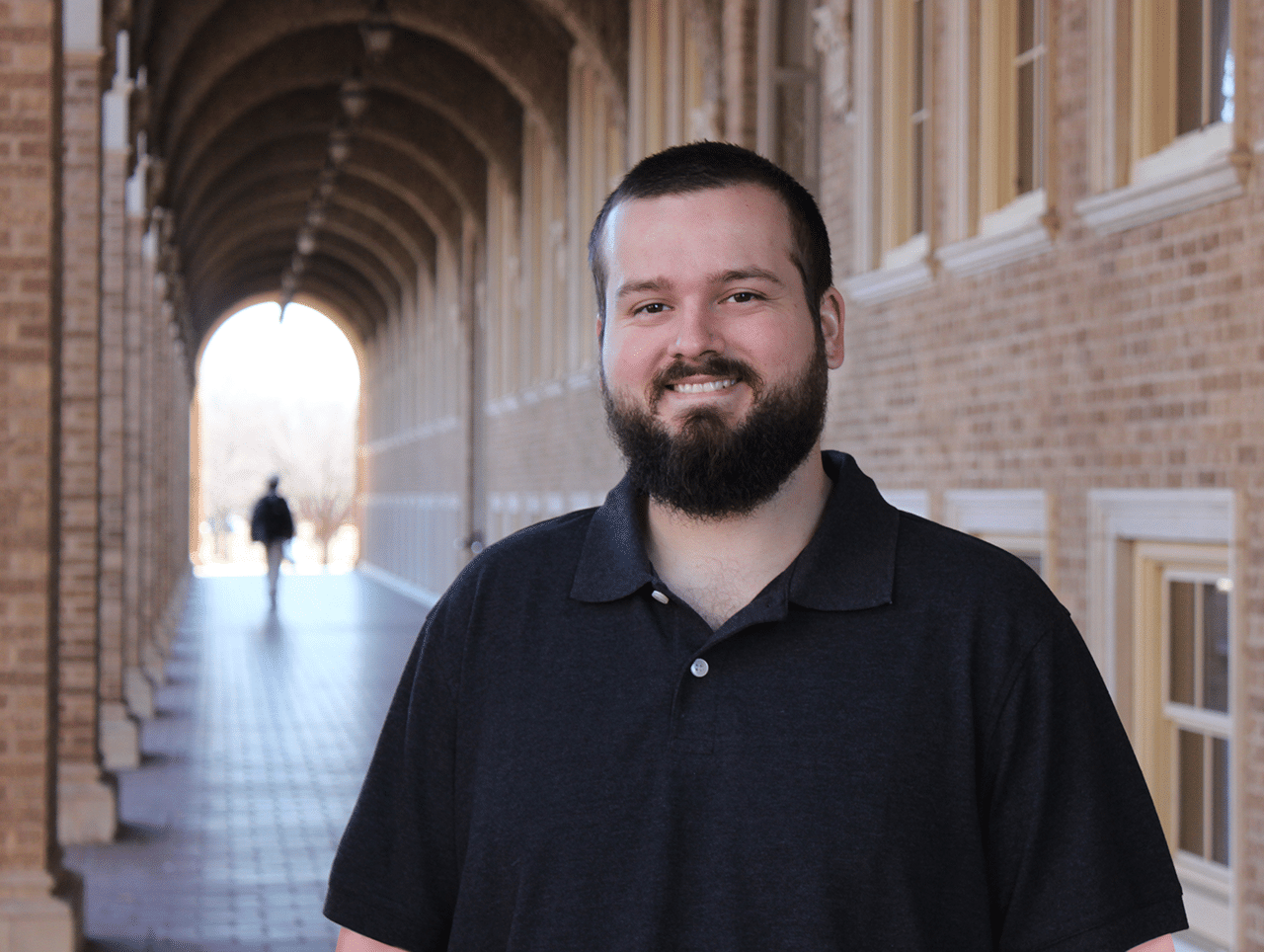Corey Bradshaw Awarded Viewing Time on SOAR Telescope

Physics graduate student Corey Bradshaw has won observing time on the SOAR telescope as principal investigator (PI)—a rare achievement for a graduate student.
3.1.2022 | Toni Salama
Corey Bradshaw, a graduate student in the Department of Physics & Astronomy, has been awarded four nights of observing time this summer on the Southern Astrophysical Research (SOAR) telescope, located in Chile's Atacama Desert.
As principal investigator (PI) on the research project, Bradshaw will use the SOAR telescope to obtain Goodman spectra of both regular pulsating B-type subdwarfs and Blue Large Amplitude Pulsators to find evidence of binary stars.
"It is a highly recognized achievement for a graduate student to receive this award as PI,” said Sung-Won Lee, physics professor and chair of the department. “Note that this observing time is quite competitive with only a total 49 nights available for the first half of 2022 to all institutions in the United States, and they typically approve only 10 to 15 regular programs at this telescope in the U.S. per semester.”
Thomas Kupfer, an assistant professor of astronomy, is Bradshaw's graduate advisor.
Bradshaw joined the graduate program as a master's student in spring 2021, having earned his bachelor's degree in physics with a concentration in astrophysics at Texas Tech in December 2020. He liked the work so much he determined that he wanted to pursue a doctorate degree instead.
“I decided within my first semester as a master's student to continue on to a Ph.D., as I was already very much enjoying the research I am involved in and the graduate program in general,” Bradshaw said. “So, I will be placing an application to change to the Ph.D. program soon.

The Southern Astrophysical Research telescope (SOAR), located in Chile's Atacama Desert. Exterior view of the observatory in the snow (at left). Interior view looking down into the SOAR telescope from above (at right). Photo courtesy Michigan State University.
While still a youngster, Bradshaw was drawn to astronomy long before he had any idea of what professional astronomers do.
“As a kid, I would use star charts to try and identify constellations in the night sky and play around with my parents' small telescope in our backyard—looking at easy targets, mostly the moon.
The childhood hobby grew into a solid choice for undergraduate study and Bradshaw's subsequent desire to continue the quest into graduate school.
Bradshaw's goal for his observation and analysis will be two-fold.
“I will be using the SOAR telescope to spectroscopically observe several stars that belong to a rare class of stellar pulsator in order to derive fundamental properties such as their masses and radii,” he said. (Pulsators are stars that periodically change their brightness, temperature and surface gravity due to expansion and contraction of the stars' outer layers.) “These properties can then be used in stellar evolution simulations to constrain the history of how these particular stars came to be.”
Bradshaw explained that the current leading theory predicts that these stars should be in a binary pair and would have evolved through interacting with their companion, but researchers have yet to find evidence of a binary companion observationally.
That's why Bradshaw also will be using data from his observing runs to look for evidence of binarity among this sample of stars.
“If I do find this evidence, then that will further suggest that this rare class of pulsating star did evolve through binary interaction with a companion star,” he said. “If I do not find this evidence, then that will suggest these stars may have evolved through other routes, which in turn will need further investigation."
Either way, Bradshaw's research will result in findings that will contribute to the knowledge of the stellar properties and evolutionary classification of these rare, hot subdwarf pulsators.
The only question now is whether he will gather his data on location at SOAR or conduct his research from afar.
“Currently, the observatory in Chile is not allowing visiting astronomers to observe on site due to their current COVID regulations,” he said. “So, as of right now it seems I will observe remotely. However, this is subject to change. We will have to reassess the possibility of that option as we get closer to the summer, when the observing is planned.”
![]()
College of Arts & Sciences
-
Address
Texas Tech University, Box 41034, Lubbock, TX 79409-1034 -
Phone
806.742.3831 -
Email
arts-and-sciences@ttu.edu
